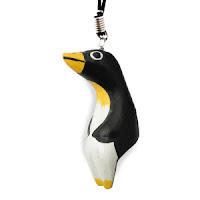One night, the main character in Killing Commendatore hears some rustling in the attic. The following day, having decided to investigate, he climbs into the attic and finds a bird there. The man is initially taken aback, but then realizes that he likes the idea of sharing the house with this quiet creature, because it makes him feel less lonely. He is a painter and works at home.
The bird is described by Murakami as a mimizuku ミミズク. We are told that it is a grey bird that looks like a cat with wings.
As a translator, one needs to find out exactly what kind of bird a mimizuku is. Different dictionaries tend to translate the name of this bird into English as "horned owl." But Japanese Wikipedia lists 17 different kinds of birds that qualify as mimizuku and offers their Latin names, many of which include the words Bubo and Otus, both owls. So is mimizuku a horned owl, or not? And if not, what is it?
An added difficulty in deciding what kind of owl will live in the attic in the translated version is that in Polish (as in many other European languages), nouns have gender. I felt that, ideally, the name I would use for the bird would be a masculine noun, so that the painter and the horned owl would be like "two guys" living together, rather than a man sharing a house with a "female" companion. I am not saying, of course, that the gender of a noun is the same as the gender of the species it represents, only that I wanted to use a masculine noun in order to create a sense of male camaraderie. I started an ornithological search and came up with three types of horned owls. All were rather brown than gray, but you can't have everything...

This was the first one. Syczek (Otus scops) had the necessary ears and was a masculine noun, but there were two problems with it: it doesn't live in East Asia and it seemed a little too small (19-22 cm or about 7 in) to cause the kind of awe the protagonist felt when he saw the bird.
The second bird, sowa uszata (Asio otus), seemed to be the right size (35-37 cm or about 14 in) -- big enough to impress, but small enough to be able to get through a hole in the net covering a ventilation hole. But the problem -- from my point of view -- was that sowa is a feminine noun.

The third bird was puchacz (Bubo bubo). I liked this one the best, because of the wonderful onomatopoeic quality of the word that imitates the bird's call (it is pronounced poo-hutch) and the fact that it was a masculine noun. This particular variety does not live in Japan, but a similar one, Bubo blakistoni (or Ketupa blakistoni) does (picture on the right). Alas, at 60-78 cm (24-31in) and 7-8 pounds in weight, the bird seemed too big to get through a small ventilation hole.
I tried to plead my case with the editor, but she would not budge. In the end, I had to go with the middle one, and change my image of two male housemates into a man sharing a house with a feminine bird. Oh, well.
Another important bird that appears in the novel is a little plastic penguin, which one of the characters attaches to her cell phone and treats as a good luck charm. I wondered what it might have looked like, and Murakami fans did not let me down. There was quite an array of plastic penguins online: key rights, flash drives. I have found some on this blog: http://coolitdown.way-nifty.com/grand_ecart/2017/06/post-5556.html





